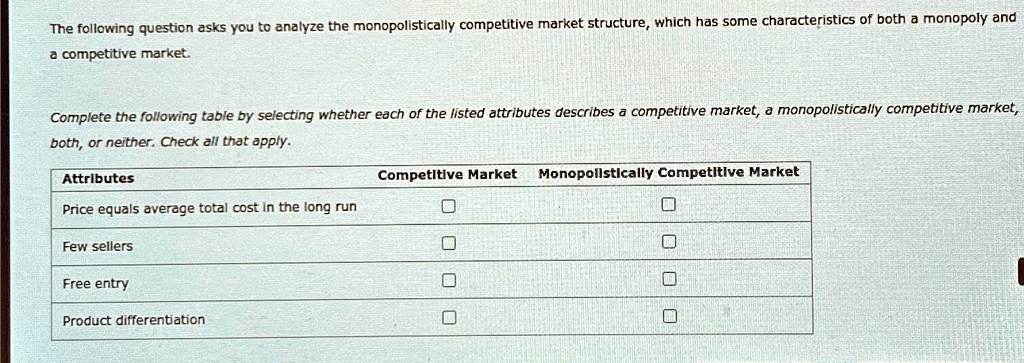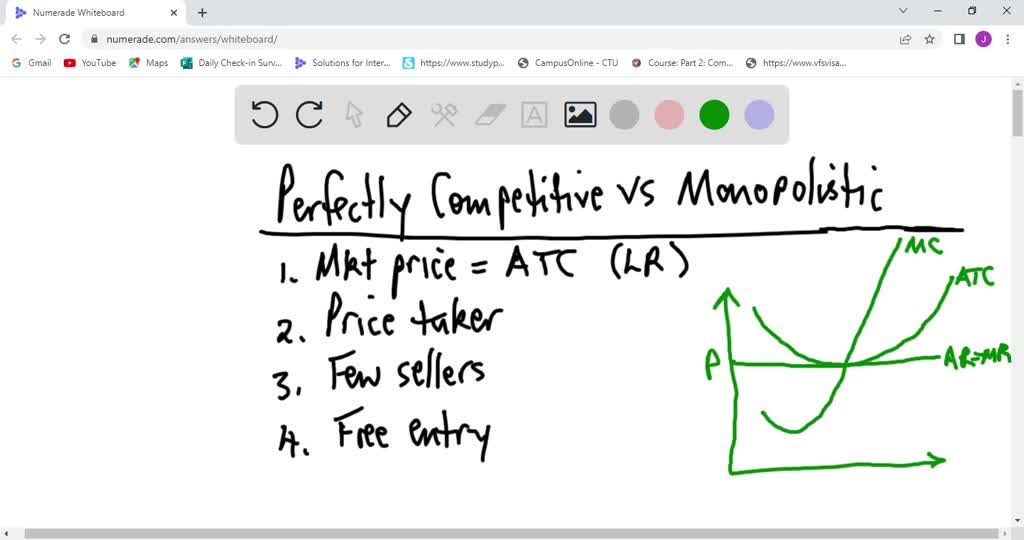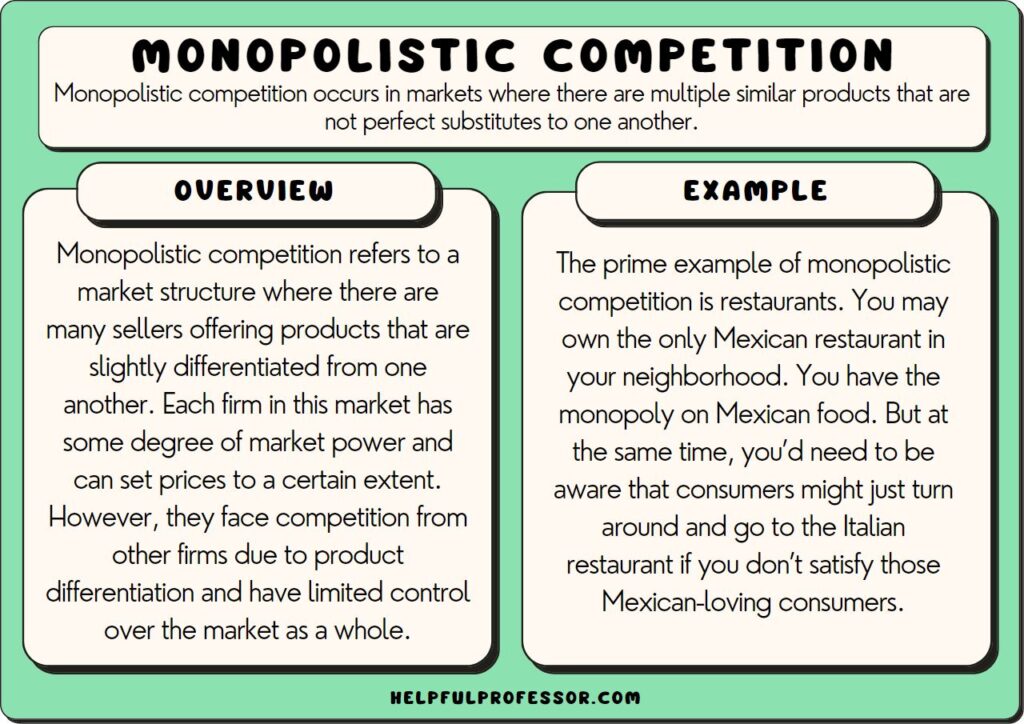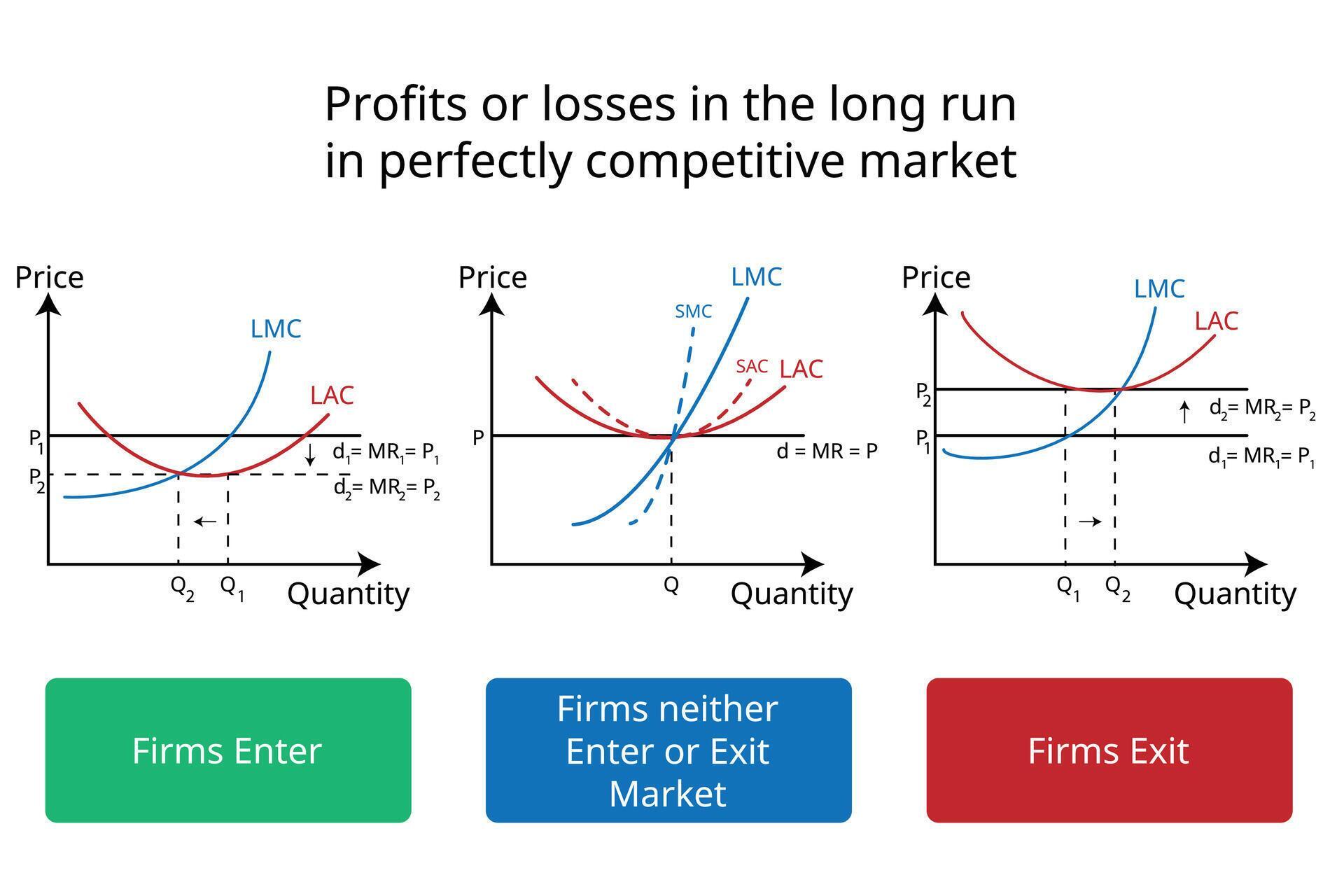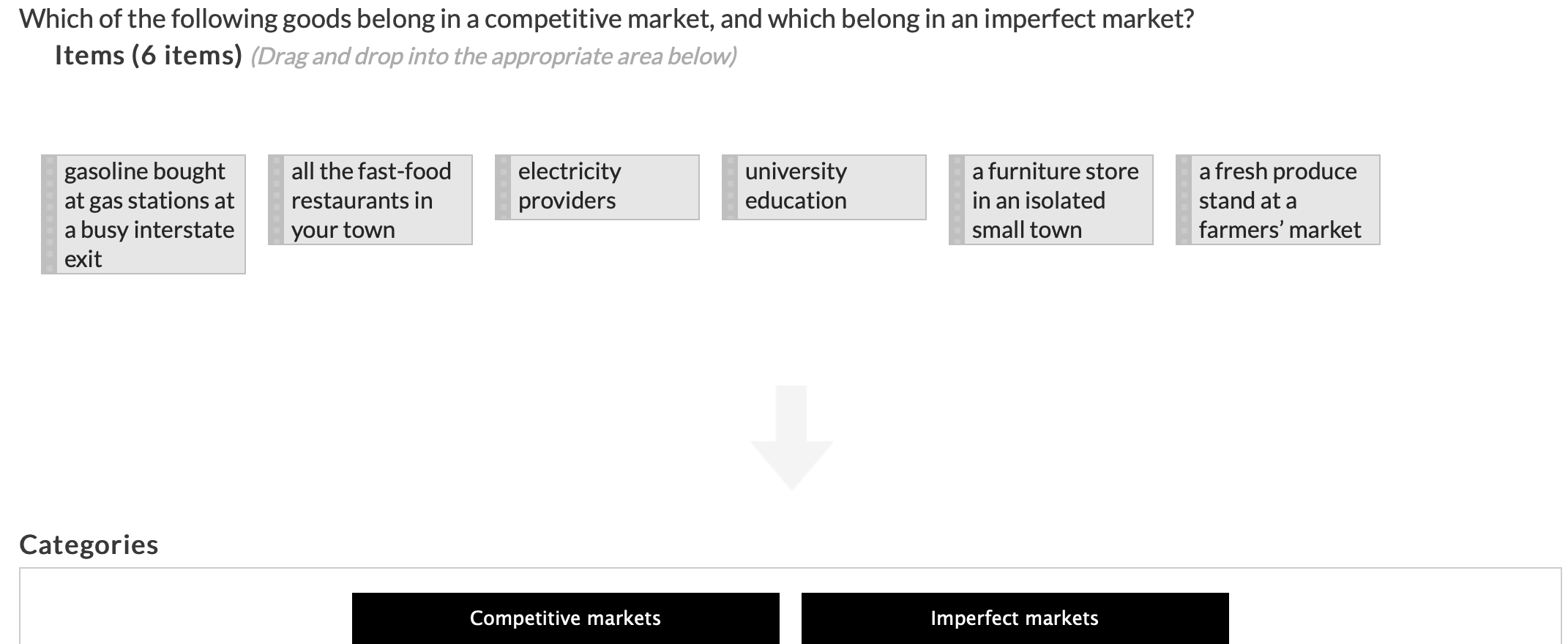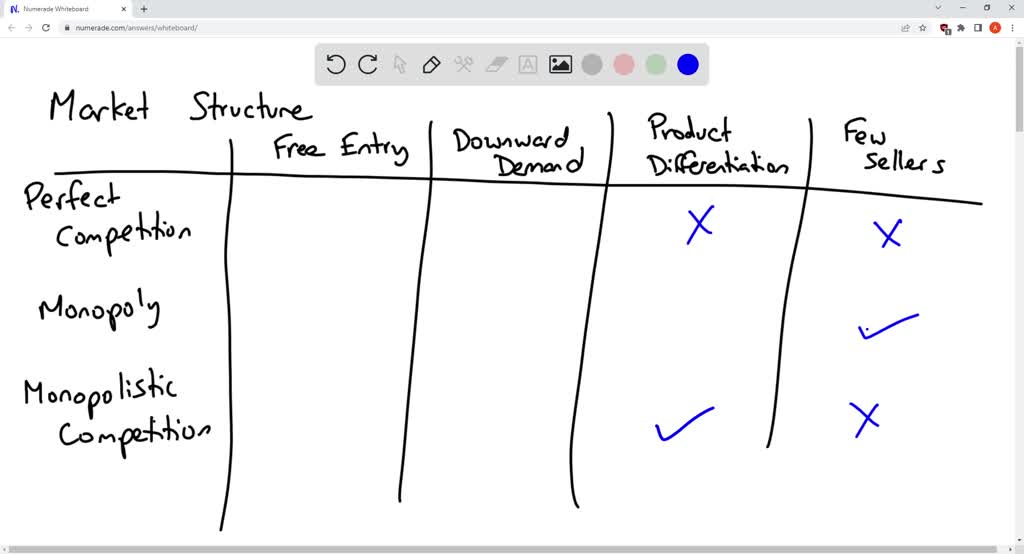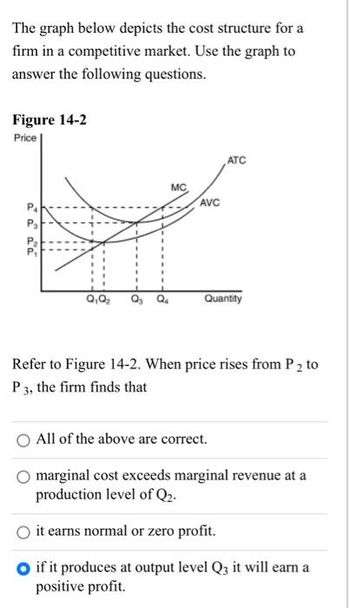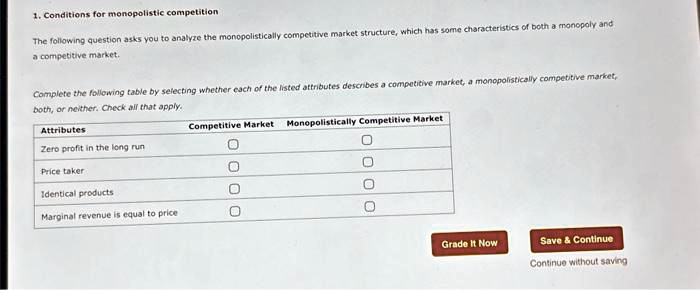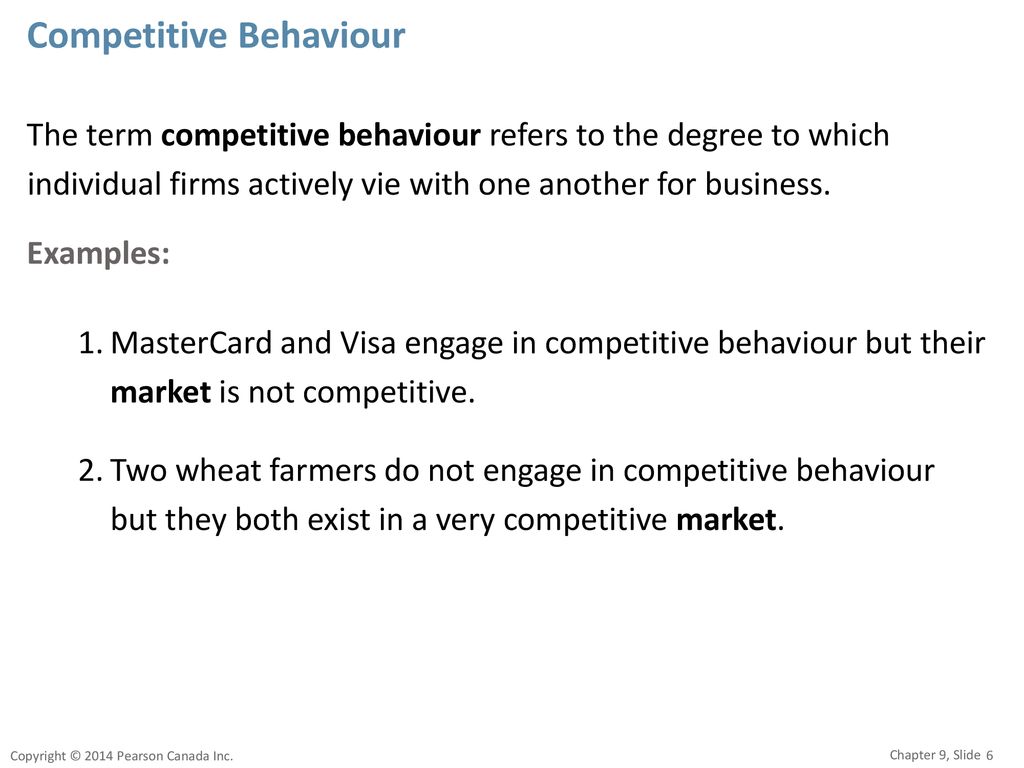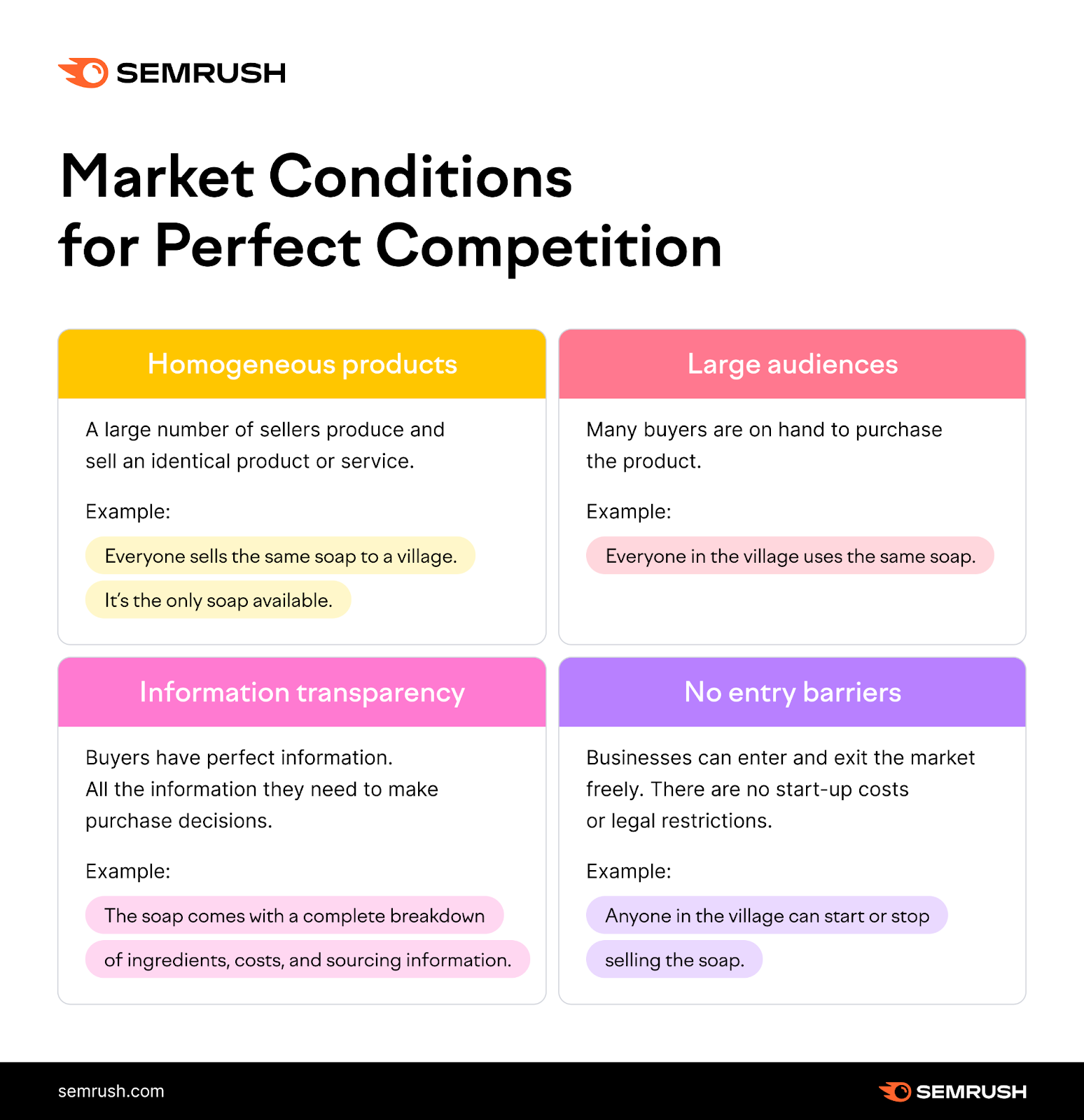All Competitive Markets Involve Which Of The Following

The relentless pursuit of understanding what fuels competitive markets has long occupied economists, policymakers, and business strategists. At the heart of this quest lies a deceptively simple question: what foundational element is invariably present in all competitive markets? The answer, while seemingly obvious to some, unveils layers of complexity when examined under the scrutiny of real-world applications and market dynamics.
This article delves into the core ingredient universally present in competitive markets: the existence of multiple buyers and sellers. We will dissect this concept, examining its implications, challenges, and the nuances that shape the competitive landscape across various industries. We will also explore how the absence or manipulation of this fundamental condition can lead to market distortions and anti-competitive behavior, ultimately impacting consumers and the overall economy. Finally, we will look ahead to future trends and how technology might influence the interplay between buyers and sellers.
The Bedrock: Multiple Participants
The presence of multiple buyers and sellers is not merely a statistical observation; it is the sine qua non of a competitive market. Without it, the very essence of competition – the downward pressure on prices and the incentive for innovation – crumbles.
Consider a scenario with only one seller (a monopoly). They wield the power to dictate prices and output, unchecked by the forces of competition. Conversely, a market with only one buyer (a monopsony) gives that buyer immense leverage over suppliers, potentially driving down prices to unsustainable levels.
More Than Just Numbers
The "multiple buyers and sellers" condition isn't solely about headcount. It requires that these participants act independently and possess a reasonable degree of bargaining power.
For example, if numerous sellers collude to fix prices, they effectively act as a single entity, negating the competitive advantage of having multiple options. Similarly, if a small number of buyers control a significant portion of the demand, they can exert undue influence on suppliers, even if the number of sellers is large.
Why It Matters: Benefits and Consequences
A truly competitive market, underpinned by multiple buyers and sellers, yields numerous benefits.
Consumers enjoy lower prices, higher quality goods and services, and greater choice. Businesses are incentivized to innovate and become more efficient to attract customers.
Conversely, the absence of this condition can lead to significant negative consequences. Monopolies can exploit consumers through higher prices and reduced output. Monopsonies can squeeze suppliers, leading to lower quality or even business failures.
The Role of Information and Transparency
The existence of multiple buyers and sellers is further enhanced by the free flow of information. Transparency allows buyers to compare prices and quality across different sellers, and allows sellers to adapt to changing market conditions.
Lack of information can create market inefficiencies and reduce the effectiveness of competition. For instance, if buyers are unaware of the existence of alternative suppliers, they may be forced to accept higher prices from the few sellers they know about.
Challenges and Exceptions
While the principle of multiple buyers and sellers is fundamental, real-world markets often present complexities.
Some industries, due to economies of scale or high barriers to entry, naturally tend towards fewer participants. Regulating these industries to promote competition while maintaining efficiency is a delicate balancing act.
Network effects can also create challenges. In industries where the value of a product or service increases as more people use it (e.g., social media), dominant players can entrench their position, making it difficult for new entrants to compete.
Looking Ahead: Technology and the Future of Competition
Technology is rapidly transforming the landscape of competitive markets. E-commerce platforms have dramatically lowered barriers to entry for sellers, while online marketplaces have expanded consumer choice.
However, technology also presents new challenges. The rise of digital platforms and data-driven advertising has raised concerns about the potential for anti-competitive behavior and the concentration of market power.
Regulators are grappling with how to apply existing antitrust laws to these new technologies and ensure that markets remain competitive. The ongoing debate highlights the enduring importance of the fundamental principle of multiple buyers and sellers in a dynamic and evolving economic environment.
In conclusion, while the competitive environment is incredibly complex, a market cannot be truly considered competitive without the presence of multiple buyers and sellers. This principle is the foundation upon which fair prices, innovation, and consumer choice are built. Ensuring this condition persists in the face of evolving technologies and market structures remains a paramount challenge for policymakers and business leaders alike.

